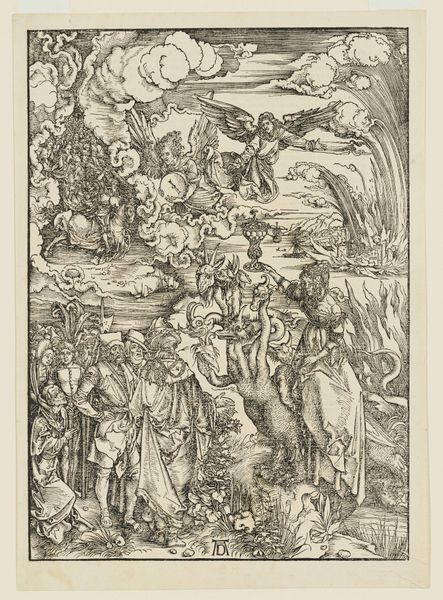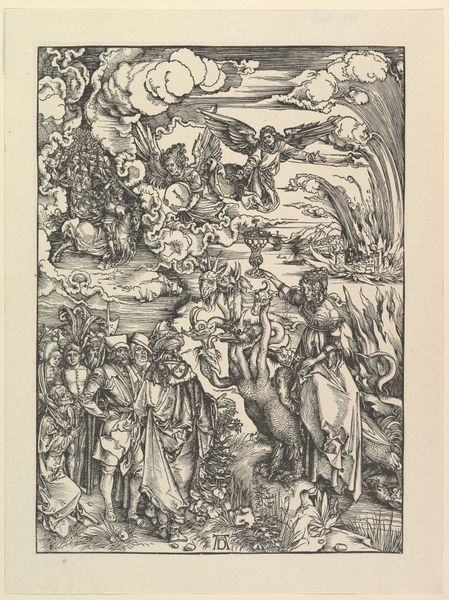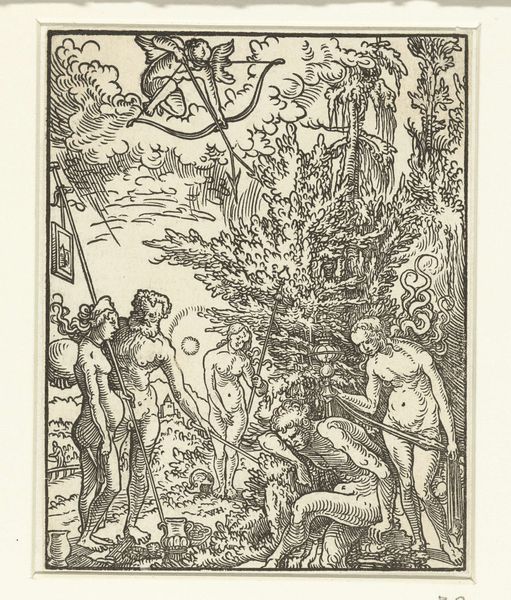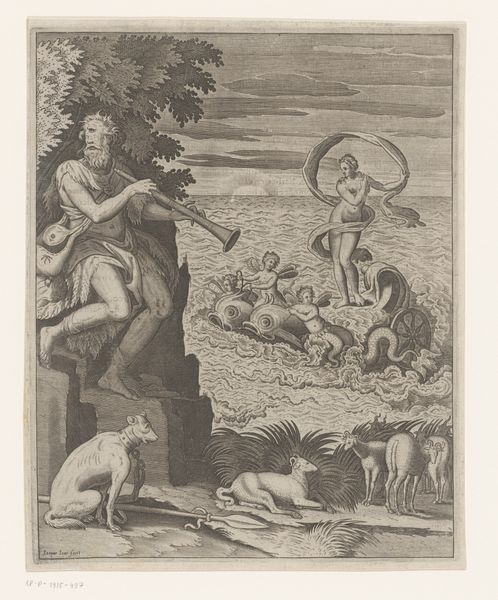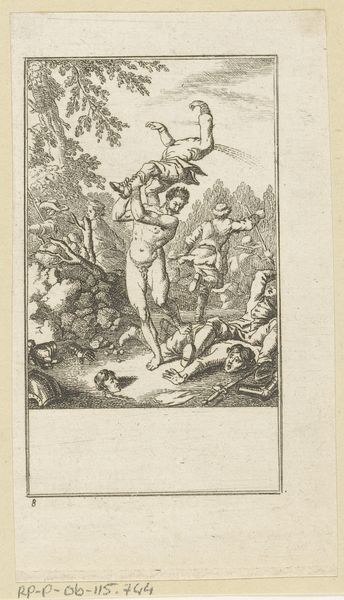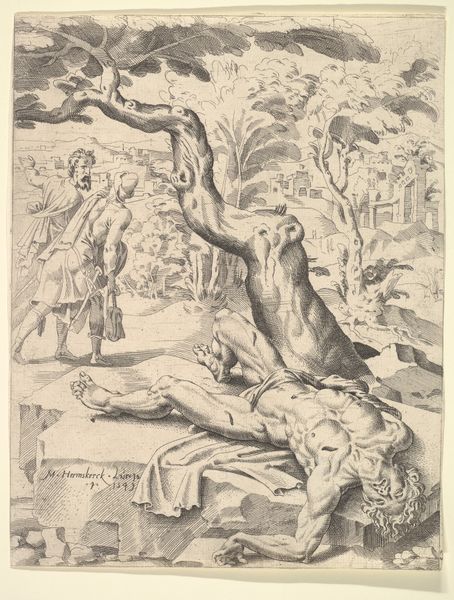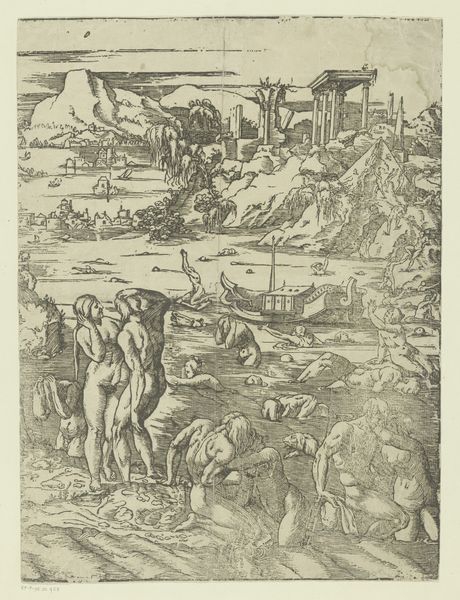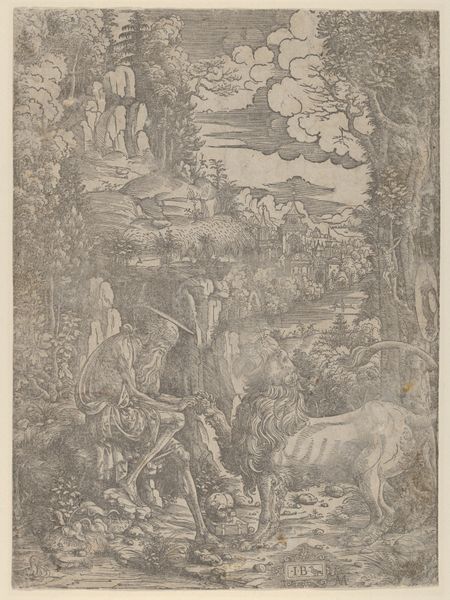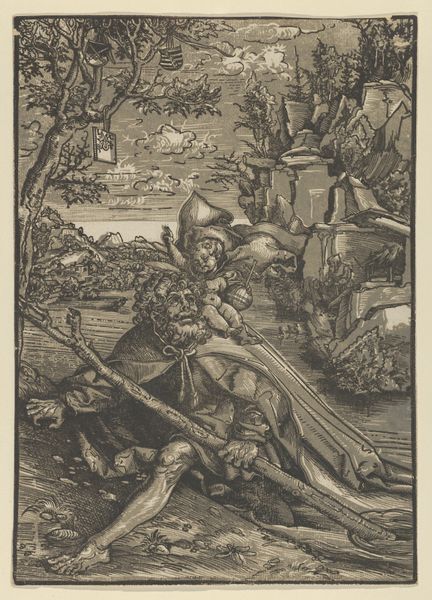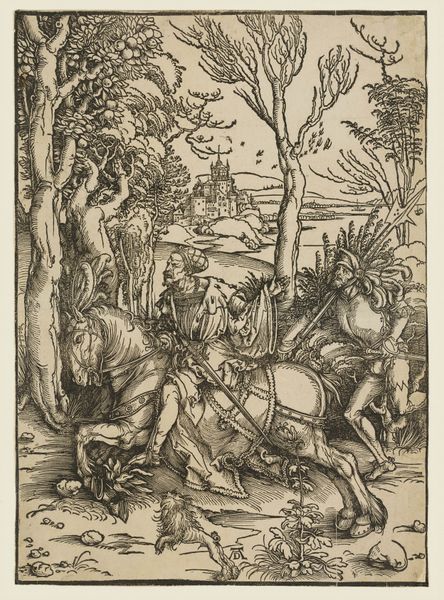
print, etching, engraving
#
narrative-art
# print
#
etching
#
figuration
#
history-painting
#
engraving
Copyright: National Gallery of Art: CC0 1.0
Editor: This is Daniel Chodowiecki's "Idris," an etching and engraving from 1789. The composition, with two distinct scenes, feels quite unusual. It's incredibly detailed given the printmaking medium, but I’m struck by its strange, dreamlike quality. How would you interpret this work? Curator: Considering Chodowiecki’s materials – etching and engraving – what does the choice of a reproducible medium say about his intentions? It’s not unique, of course, given print’s democratizing effect, but think about the labor involved in such detail. The accessibility is vital. What kind of market was he targeting, and what message was he trying to spread? Are these images accessible to all, or did the artist target wealthier individuals with a literary background? Editor: So you are saying the print making gives this work a certain social dimension related to production, the distribution method and its potential consumers? I guess that makes sense given that these were techniques that enabled wider, cheaper distribution than painting. Do you think the subject is affected? Curator: Absolutely. Consider the subject matter. We have narrative scenes, likely illustrating a popular story or moral tale of the time. But how does the *means* of conveying that narrative – this meticulous, reproducible print – affect its reception? Is it "high art" destined for a collector’s wall, or a more common image circulated and consumed by a wider audience? And who controlled access to these stories? How might that impact the narratives portrayed? Editor: That's fascinating, I hadn't thought about the connection between the story, the medium and the potential consumers. It really highlights the cultural work involved in something we might initially just see as an artwork. Curator: Exactly. And understanding the relationship between production, materials, and social context unlocks a deeper appreciation for pieces like "Idris." The layering of meaning and how it becomes available for certain population is so interesting to study.
Comments
No comments
Be the first to comment and join the conversation on the ultimate creative platform.
